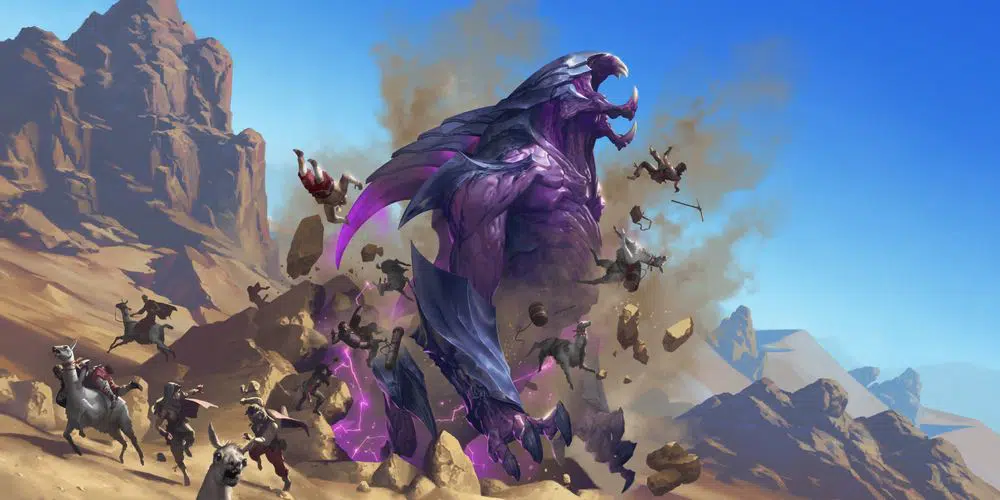19 cards

21 cards
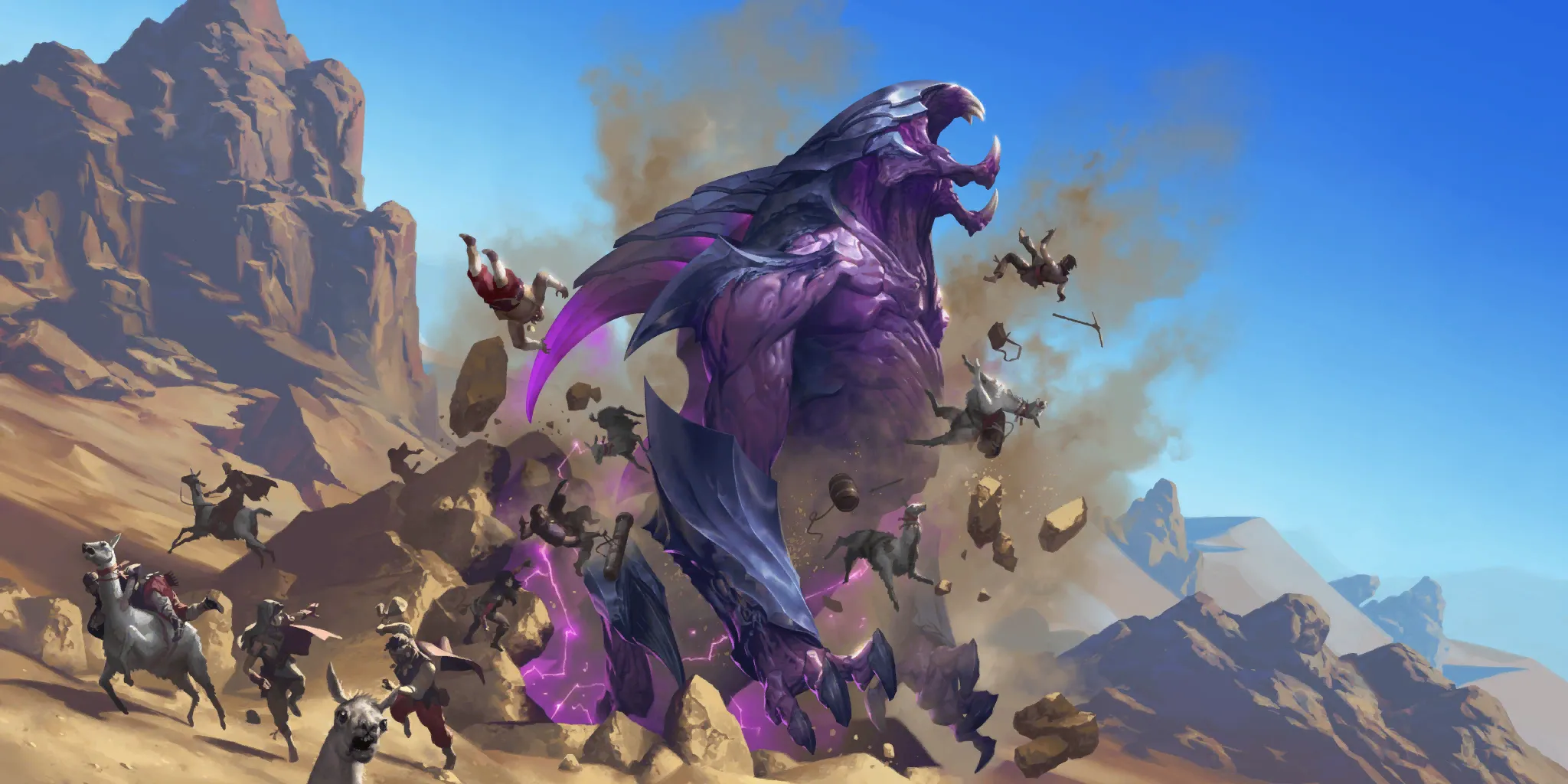
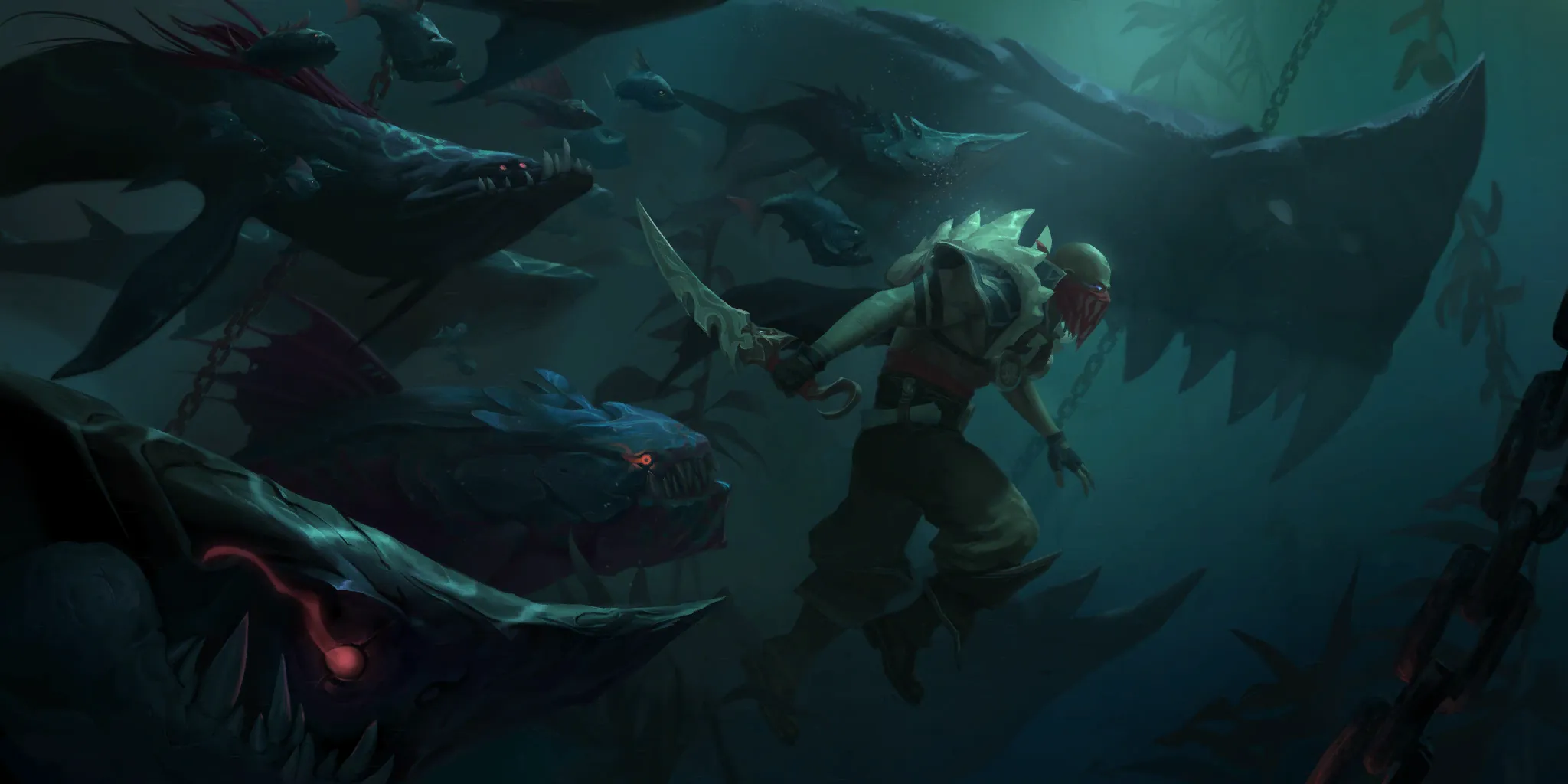
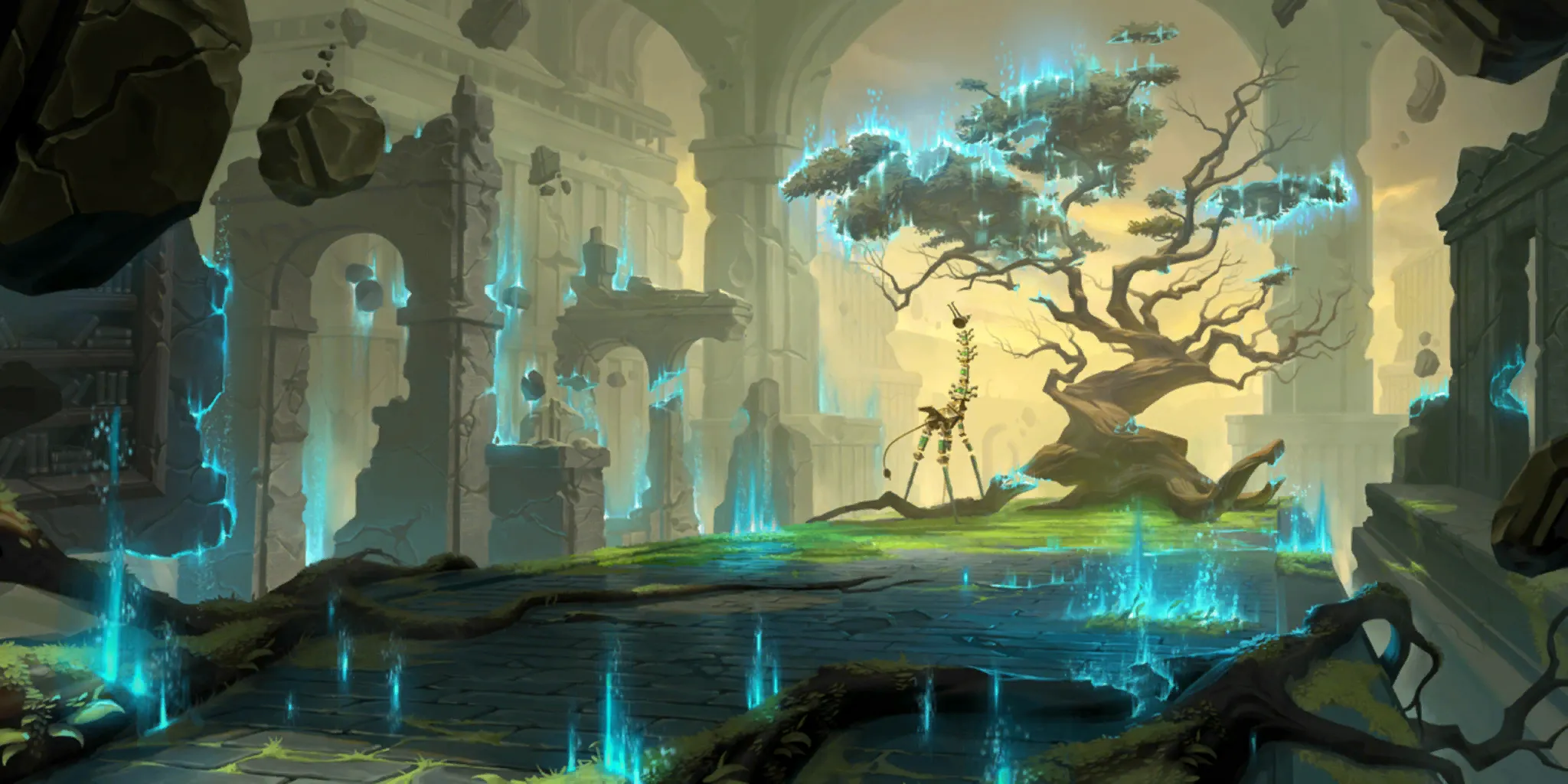
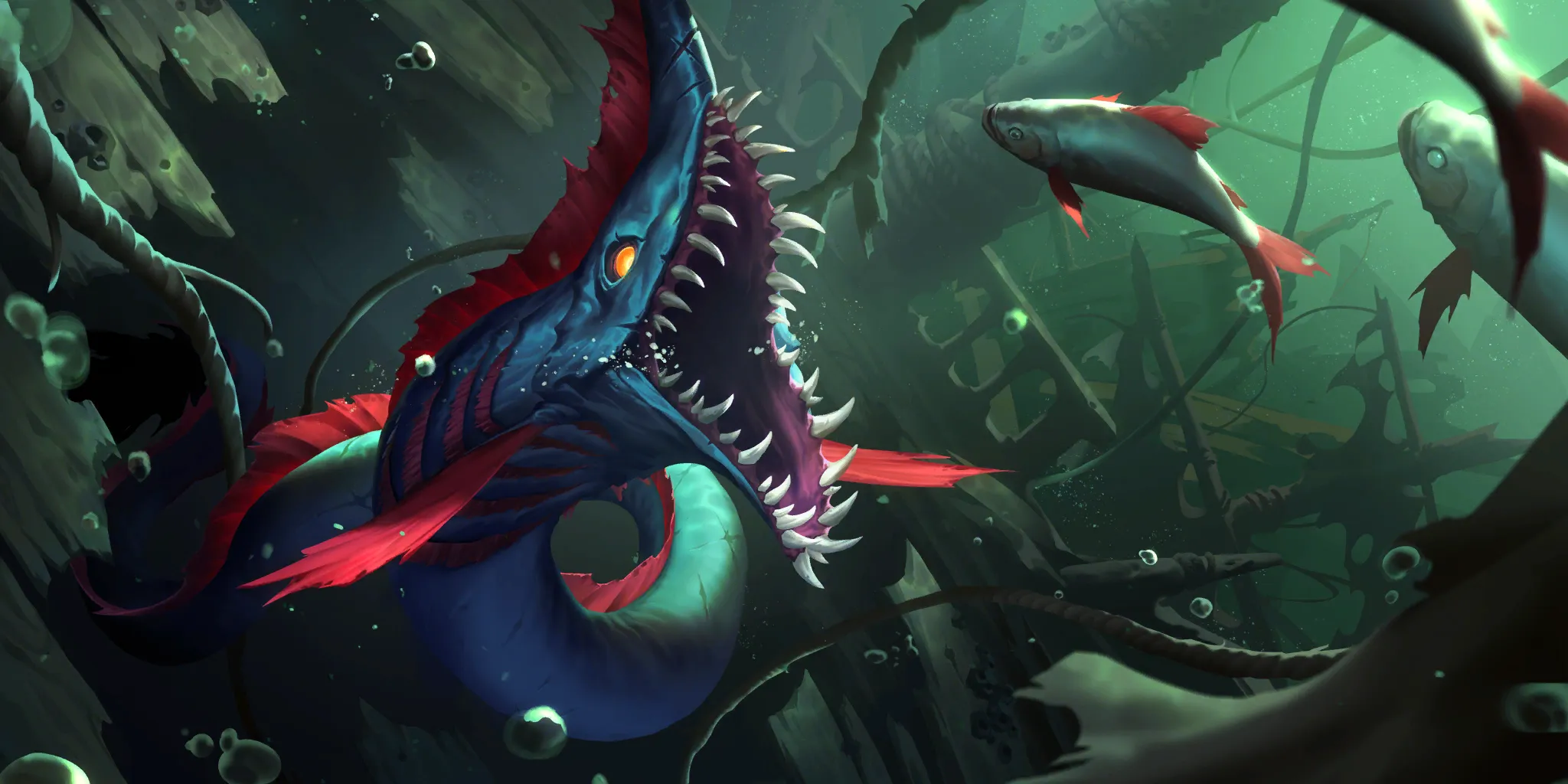
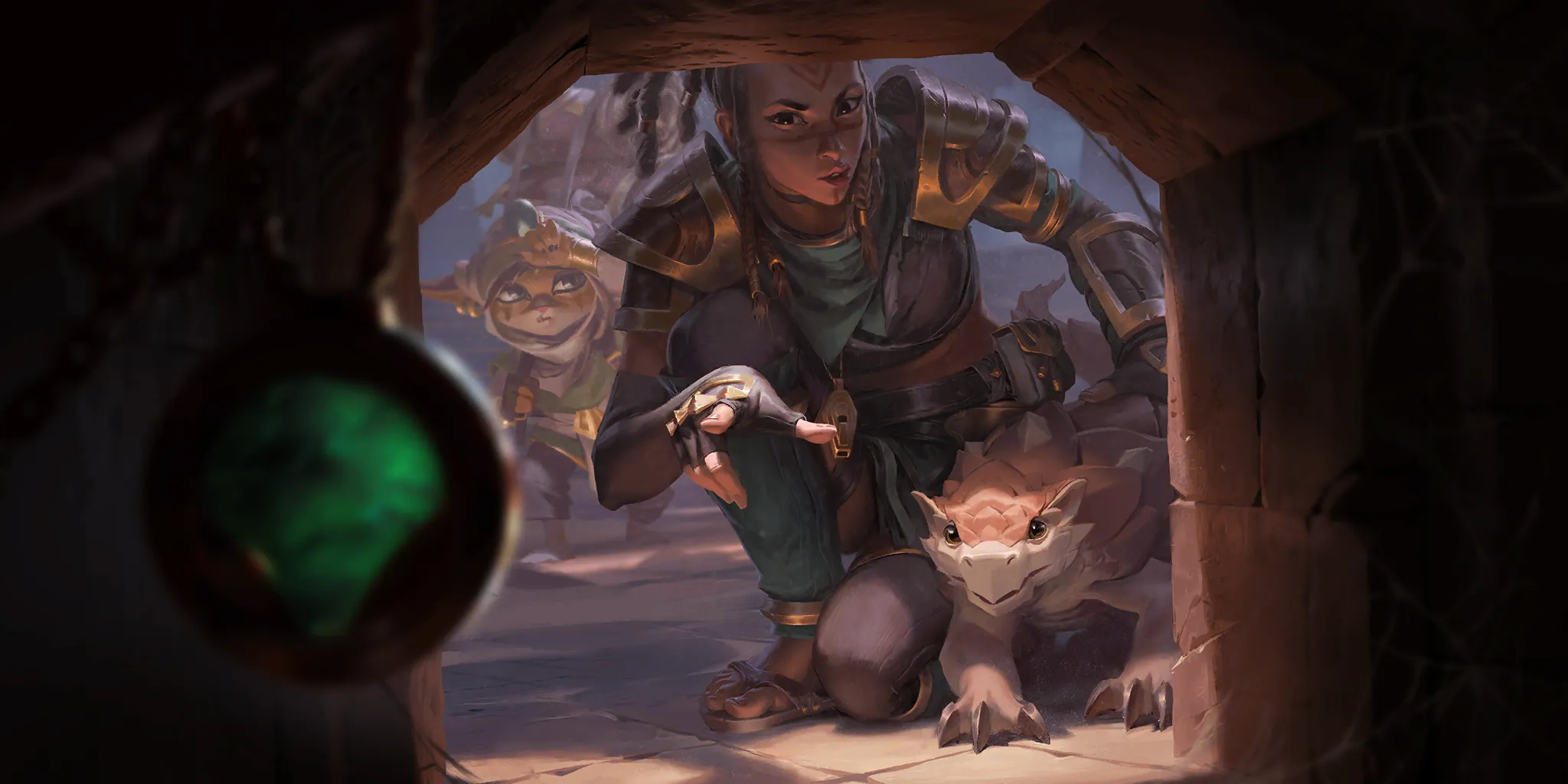
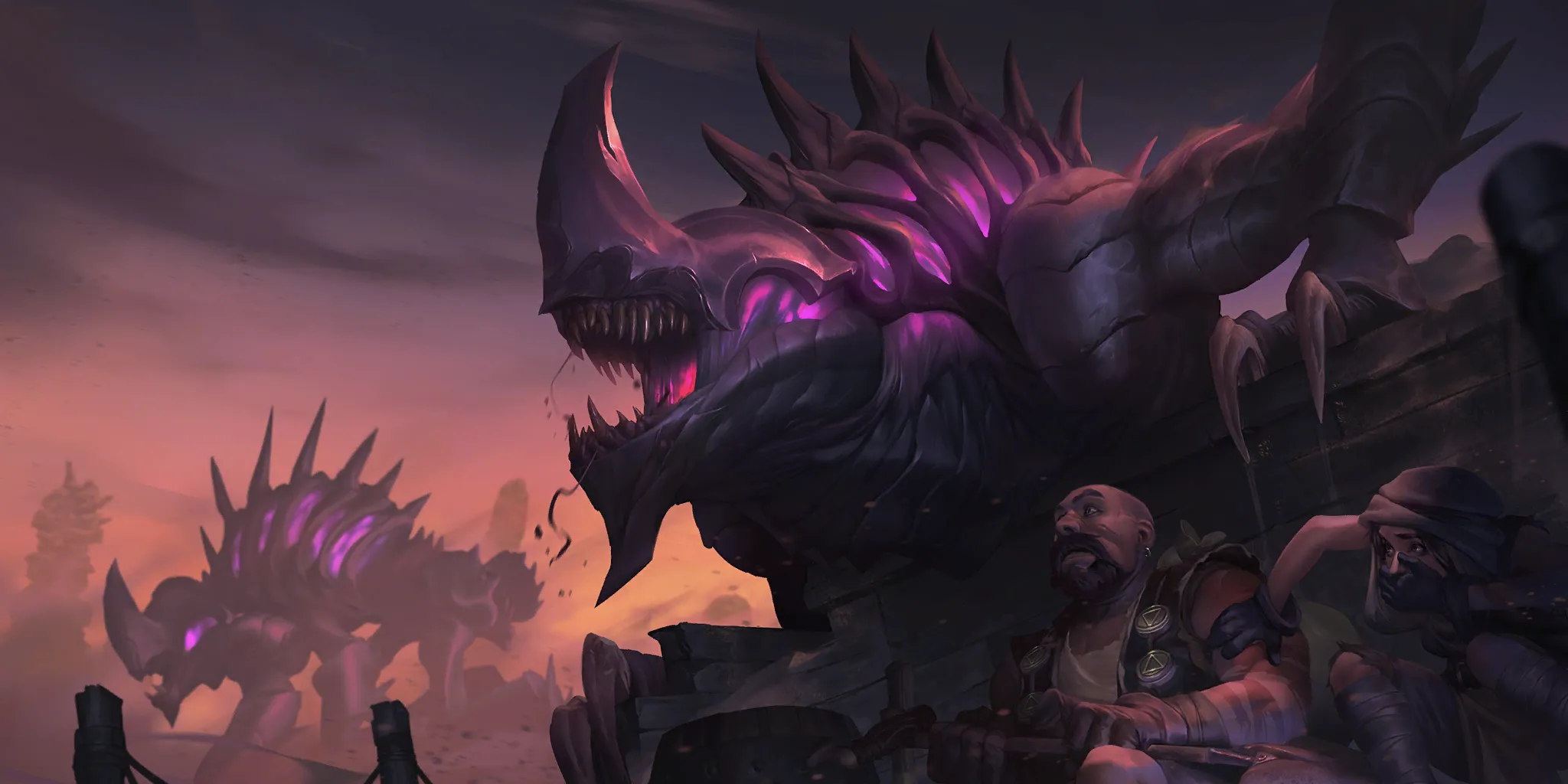
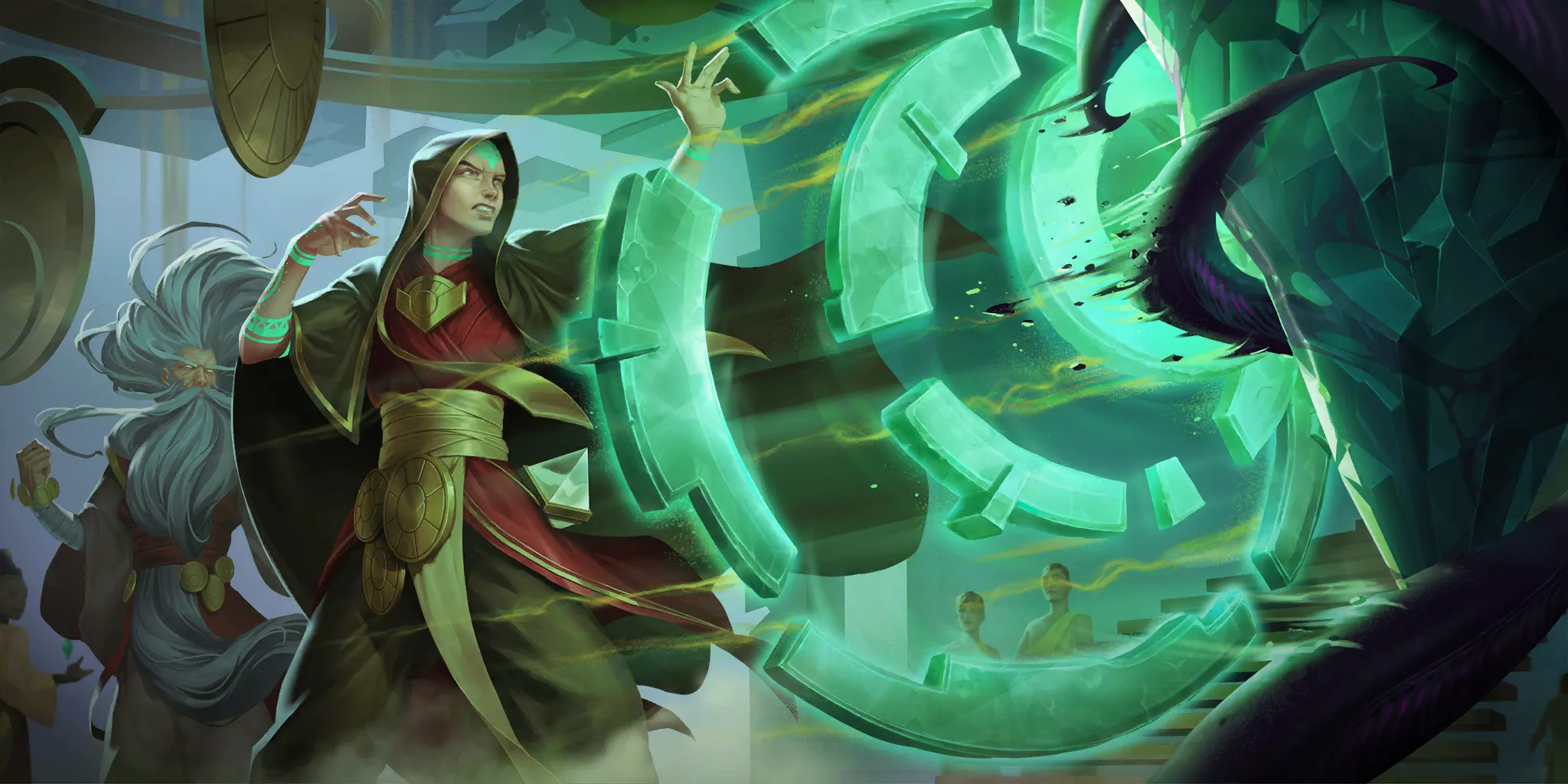
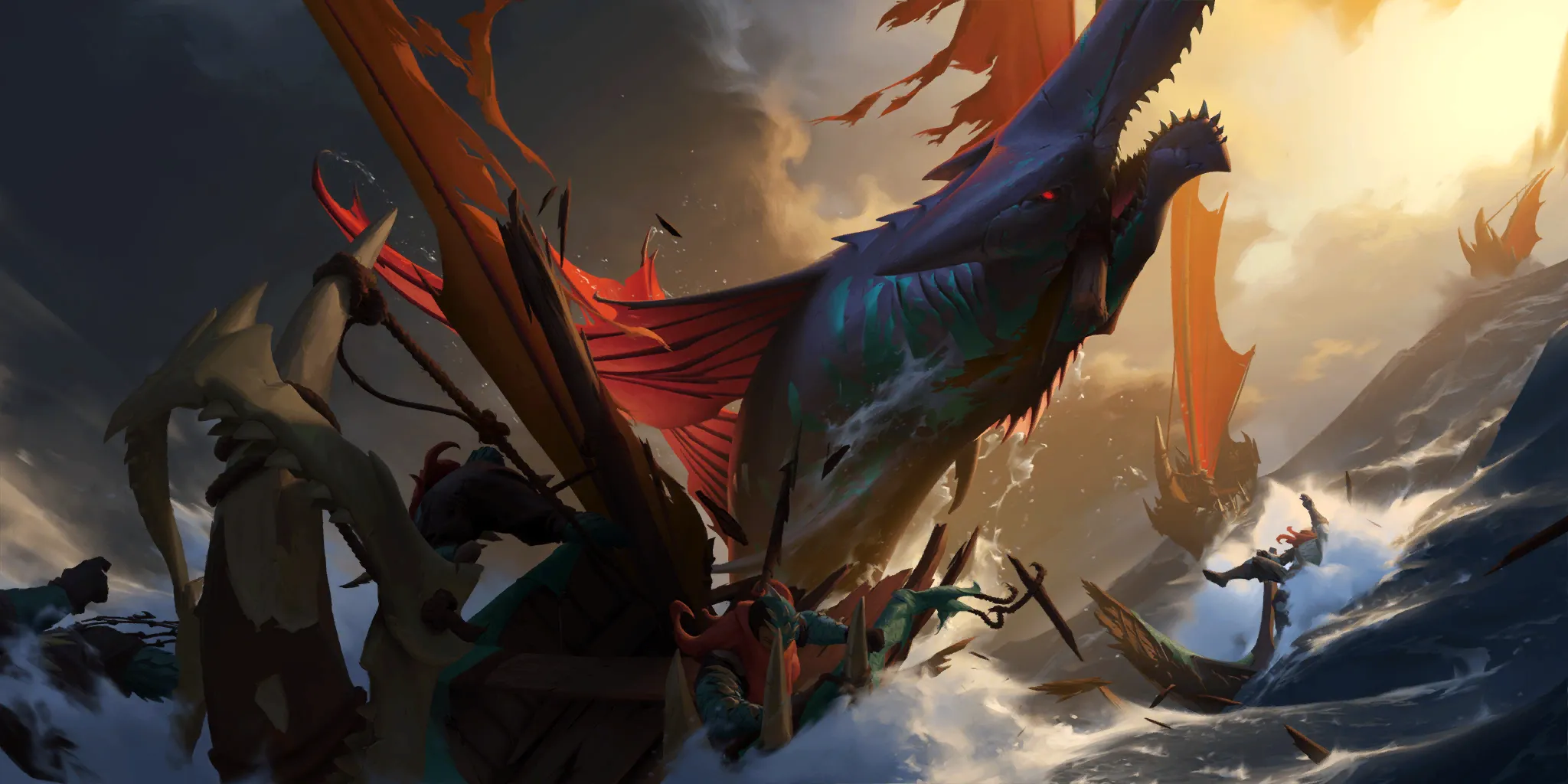

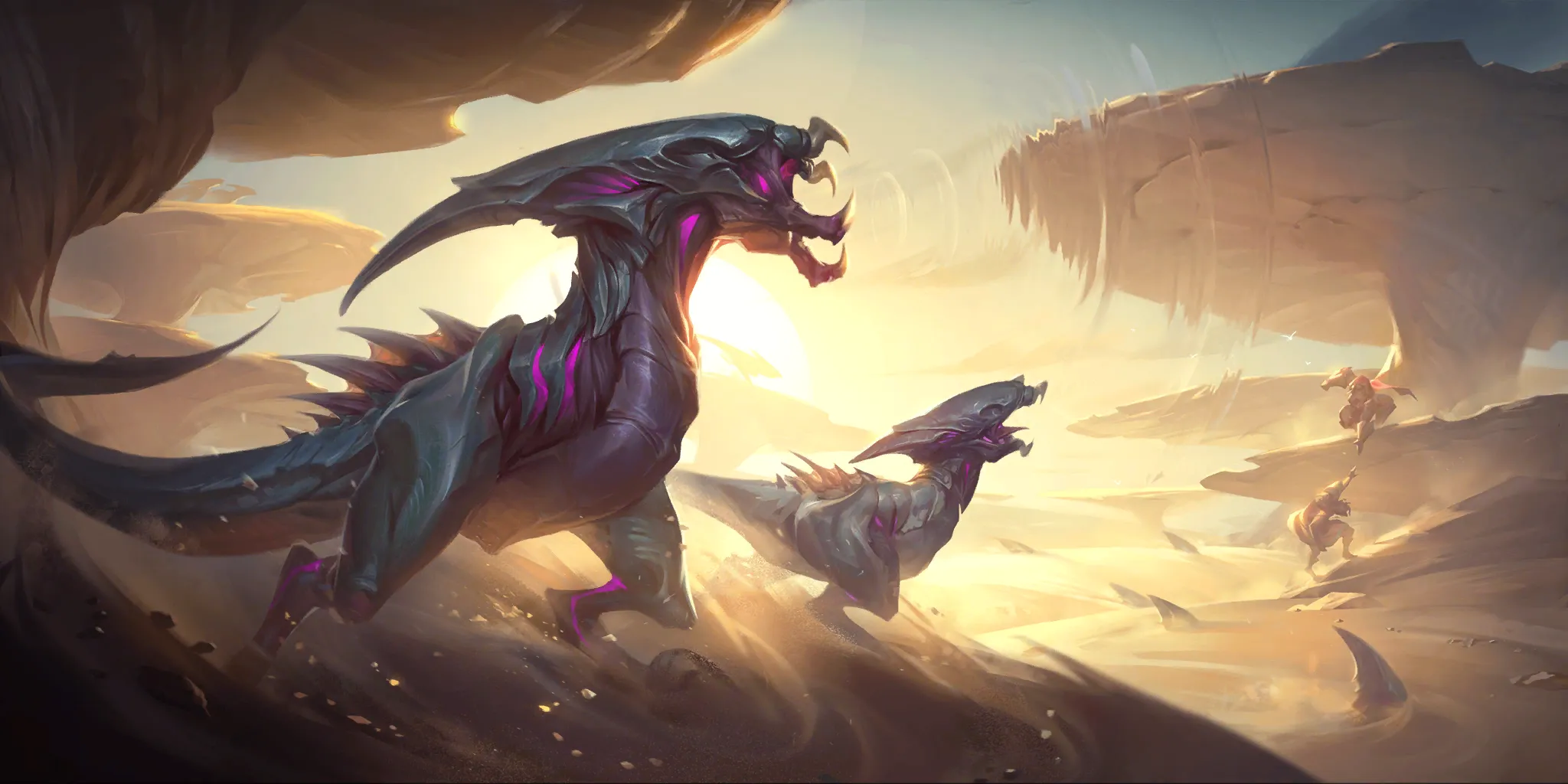
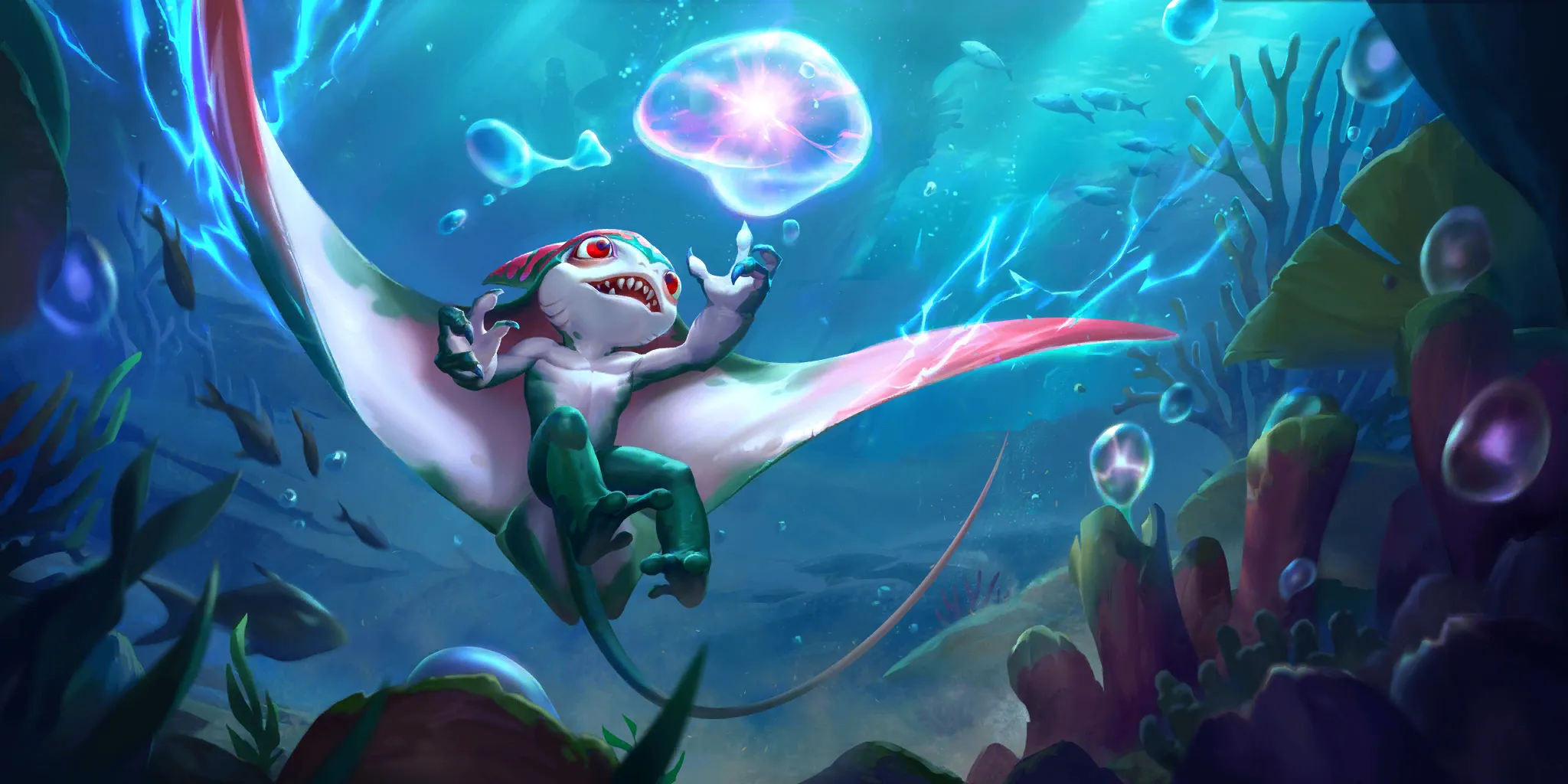
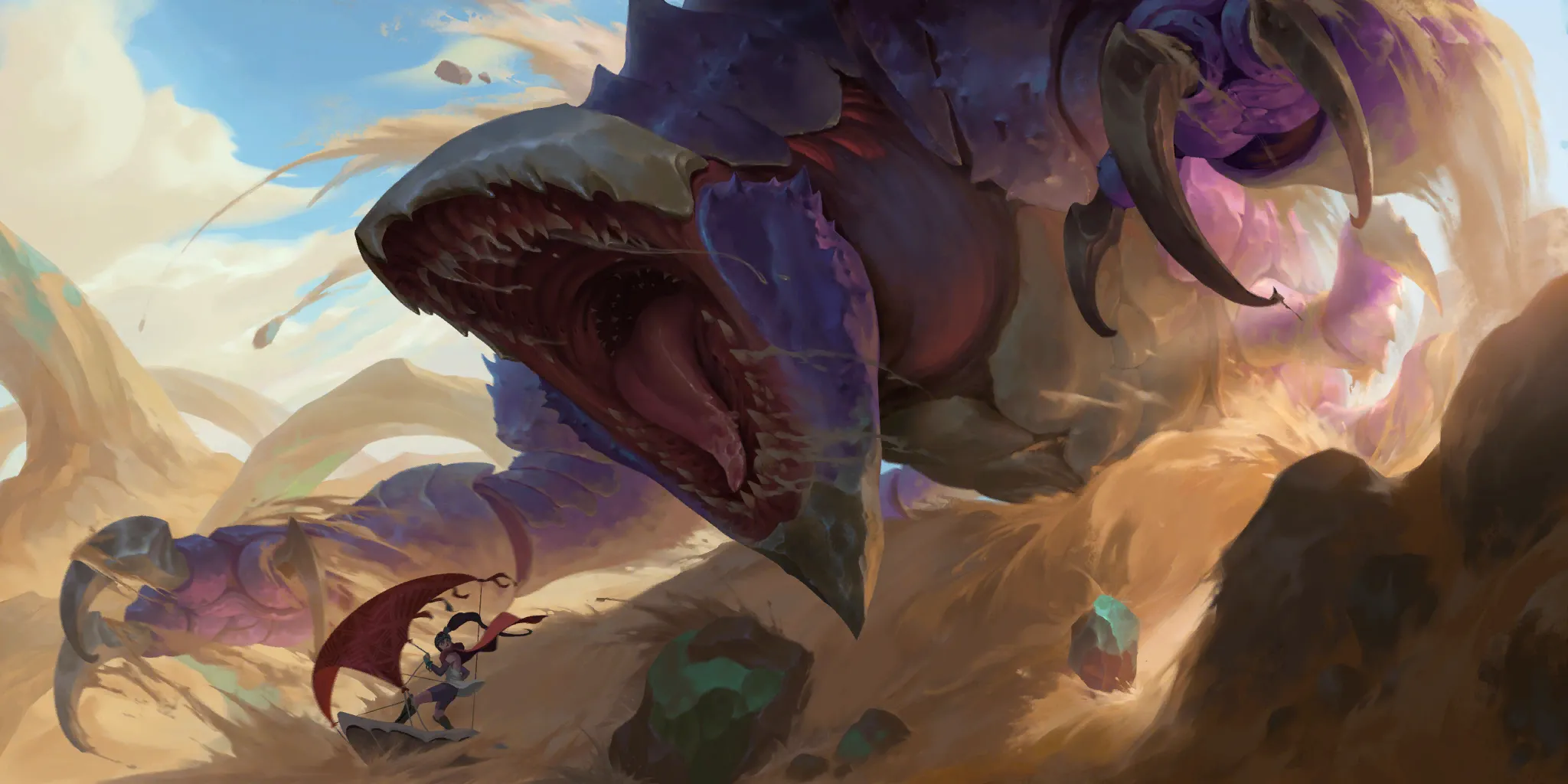



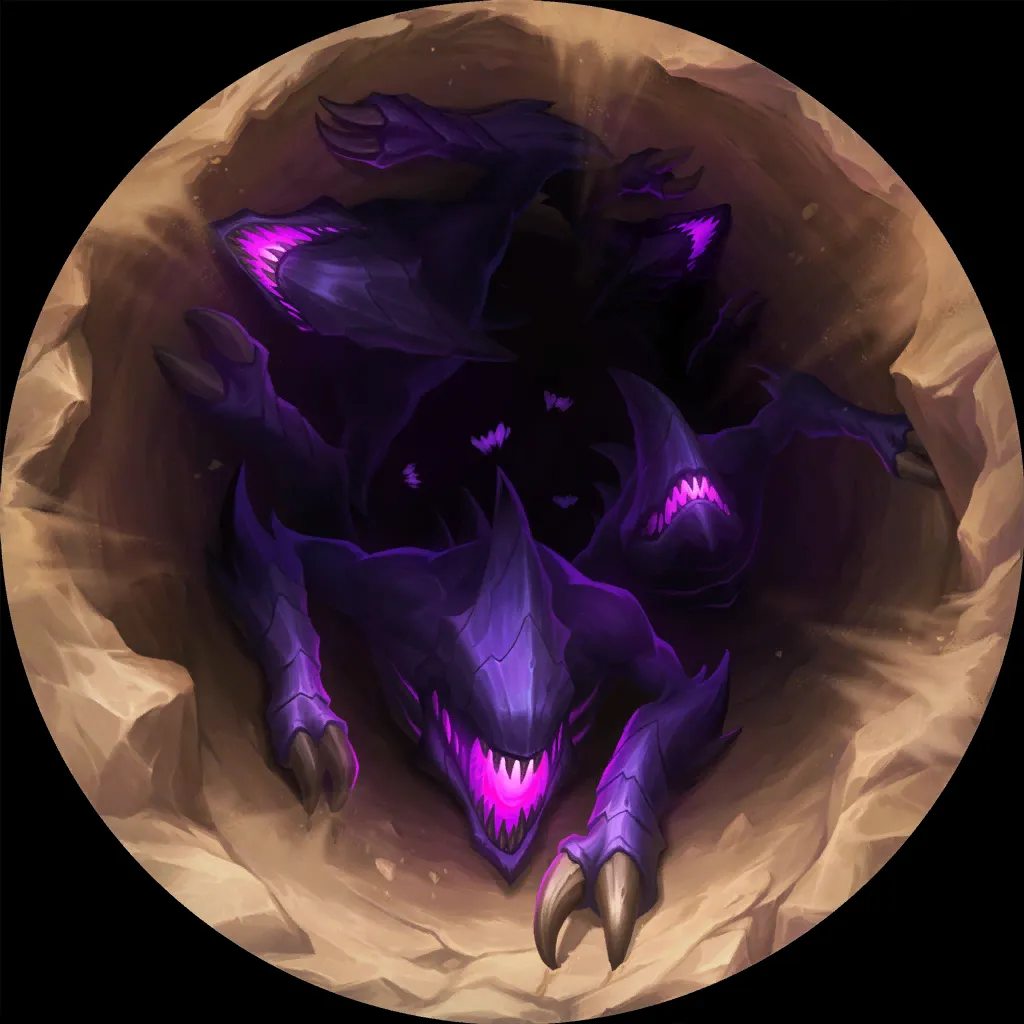
Hey guys, Jasensational here. Ever since the release of Rek'Sai and Pyke
and Pyke , Lurk has always been an archetype that has been lurking (haha get it) in metas. Most players will associate it with a super straight forward, linear, hope you get lucky deck, and often they dismiss it as a subpar deck compared to some of the strongest meta decks.
, Lurk has always been an archetype that has been lurking (haha get it) in metas. Most players will associate it with a super straight forward, linear, hope you get lucky deck, and often they dismiss it as a subpar deck compared to some of the strongest meta decks.
I won’t lie, when I first saw the deck in action, I thought the same things to myself. However, late last season, I decided to pick up the deck for myself and give it a true and honest try. As I experimented more and more with different play patterns and turns, I became fascinated by the complexity of the deck itself; once you see your opening hand, it’s so important to be thinking 2 or 3 turns ahead. Is this a game where I’m beating down my opponent super fast with large lurk units? Is this a game where I should try to level Pyke and swing the board around? How does each predict change my gameplan?
and swing the board around? How does each predict change my gameplan?
Since then, Lurk has quickly risen to be one of my favorite decks to play, and I’ve just hit level 5 mastery in both champions. The deck is fast, variable, and complex, and I’m here to share my experiences with it.
Win Cons
Legends of Runeterra is a card game where most decks are centered around their champions being the main win cons, and Lurk is no different. Let’s break down the role of both champions in this deck and their purpose.
At the core of the deck is the Lurk mechanic and Rek'Sai . Lurk can be triggered once a turn, granting all units with the Lurk keyword everywhere +1/+0. Lurk is triggered by attacking with a Lurk card as the first card on top of your deck. If that card is Rek’sai, her ability also goes off granting an additional +1/+0. With each attack, you are able to work towards leveling Rek’sai, who needs to be attacking with 10+ power, which this deck does by slowly amassing lurks and buffing our entire board and champions. Given the right draws and predicts, Rek’sai can level as early as turn five, which represents a 11/7 Overwhelm unit which can swing games by herself. Also by doing so, we can refill our hand to pressure out the opponent. Along the way, our other lurk units will be growing, and the opponent will be staring down a board of 6/2s and 7/3s. The faster we can level Rek’sai, the more impactful she will be as the opponent will be less likely to deal with her.
. Lurk can be triggered once a turn, granting all units with the Lurk keyword everywhere +1/+0. Lurk is triggered by attacking with a Lurk card as the first card on top of your deck. If that card is Rek’sai, her ability also goes off granting an additional +1/+0. With each attack, you are able to work towards leveling Rek’sai, who needs to be attacking with 10+ power, which this deck does by slowly amassing lurks and buffing our entire board and champions. Given the right draws and predicts, Rek’sai can level as early as turn five, which represents a 11/7 Overwhelm unit which can swing games by herself. Also by doing so, we can refill our hand to pressure out the opponent. Along the way, our other lurk units will be growing, and the opponent will be staring down a board of 6/2s and 7/3s. The faster we can level Rek’sai, the more impactful she will be as the opponent will be less likely to deal with her.
Then there is Pyke . Pyke has a unique ability, where when he levels up after dealing fifthteen damage, he can wipe entire boards by himself, opening us up for a nice open attack with a board full of large lurkers. However, Pyke himself is a vulnerable card to play out by himself, only having three health and no real ways of protecting him. Instead, this deck aims to Lurk Pyke, which will transform him into Death From Below
. Pyke has a unique ability, where when he levels up after dealing fifthteen damage, he can wipe entire boards by himself, opening us up for a nice open attack with a board full of large lurkers. However, Pyke himself is a vulnerable card to play out by himself, only having three health and no real ways of protecting him. Instead, this deck aims to Lurk Pyke, which will transform him into Death From Below , a four mana spell that allows you to strike an opponent unit and summon Pyke. This can be insanely powerful if you’ve been able to get a few lurks in the early game, making this card essentially a fast speed Tri-beam Improbulator
, a four mana spell that allows you to strike an opponent unit and summon Pyke. This can be insanely powerful if you’ve been able to get a few lurks in the early game, making this card essentially a fast speed Tri-beam Improbulator . With the ability to hold multiple Death from Belows or the ability to put Pyke back onto the top of our deck with Bone Skewer
. With the ability to hold multiple Death from Belows or the ability to put Pyke back onto the top of our deck with Bone Skewer , we can set up turns where we level Pyke and get to wipe out the opponent’s board or remove a key unit where our deck otherwise has no real way of doing so.
, we can set up turns where we level Pyke and get to wipe out the opponent’s board or remove a key unit where our deck otherwise has no real way of doing so.
If either plan doesn’t work out exactly the way we want it to, we’re still able to play a midrange game and try to swing the game by setting up a board and playing Jaull Fish. While we only run Xerxa'Reth, The Undertitan as our real midrange card, we are able to generate more units off of Call the Pack
as our real midrange card, we are able to generate more units off of Call the Pack to supplement our curve. Don’t forget that even our one drops like Sharkling
to supplement our curve. Don’t forget that even our one drops like Sharkling or Xer'sai Hatchling
or Xer'sai Hatchling can come down as one mana 5/1s or 5/2s in the midgame as well. But be careful going down this route, as we have practically zero card draw to outvalue opponents.
can come down as one mana 5/1s or 5/2s in the midgame as well. But be careful going down this route, as we have practically zero card draw to outvalue opponents.
When to Play Your Cards
Snapjaw swarm
Snapjaw Swarm may be one of the highest skill ceiling cards in this deck. The power of Snapjaw Swarm lies in its ability to trigger a free attack on summon, allowing you to get a lurk proc on the turns that you are not attacking, but there are more things to consider rather than jamming this card on turn two every time (assuming you’re attacking on odds).
may be one of the highest skill ceiling cards in this deck. The power of Snapjaw Swarm lies in its ability to trigger a free attack on summon, allowing you to get a lurk proc on the turns that you are not attacking, but there are more things to consider rather than jamming this card on turn two every time (assuming you’re attacking on odds).
The first and most important thing to consider when playing this card is, what happens if I miss the Lurk. In a lot of situations, especially on turn two, Snapjaw Swarm can either be a 1/2 or a 2/2 depending on if you miss the Lurk. If that 1/2 is going to suicide itself into the opponent’s 2/3 or 3/2 then you might lose the game on the spot.
can either be a 1/2 or a 2/2 depending on if you miss the Lurk. If that 1/2 is going to suicide itself into the opponent’s 2/3 or 3/2 then you might lose the game on the spot.
The second thing to consider (you’re going to be hearing this a lot) is your current hand state, and what your plans for the next few turns are going to look like. If you have Call the Pack and Rek'Sai
and Rek'Sai in hand along with Snapjaw Swarm
in hand along with Snapjaw Swarm , then maybe you want to save the Swarm until turn four where you can hit a Rek’sai lurk and then follow it up with a Rek’sai swing to get Rek’sai triggers two turns in a row. If you are able to set up an aggressive board state by playing two one drops instead of the Swarm to set up a more aggressive attack, then maybe you want to save the Swarm for later.
, then maybe you want to save the Swarm until turn four where you can hit a Rek’sai lurk and then follow it up with a Rek’sai swing to get Rek’sai triggers two turns in a row. If you are able to set up an aggressive board state by playing two one drops instead of the Swarm to set up a more aggressive attack, then maybe you want to save the Swarm for later.
In a pinch, Snapjaw Swarm can also be used as a pseudo-burn spell. Once you develop, attack into your opponent, and clear away all potential blockers, then we can play Swarm to sneak in 5+ damage that the opponent may not expect. I’ve had a game where I had 3 Swarms in hand and played them one after another after my attack and OTKed my opponent after my attack.
can also be used as a pseudo-burn spell. Once you develop, attack into your opponent, and clear away all potential blockers, then we can play Swarm to sneak in 5+ damage that the opponent may not expect. I’ve had a game where I had 3 Swarms in hand and played them one after another after my attack and OTKed my opponent after my attack.
Bloodbait
Bloodbait is one of the most interesting cards in this deck. Not only does it add a card on top of our deck, the card it adds is also a Snapjaw Swarm
is one of the most interesting cards in this deck. Not only does it add a card on top of our deck, the card it adds is also a Snapjaw Swarm . This is a super specific combo piece that ties up our high-rolls with this deck. As such, this card should not be played randomly.
. This is a super specific combo piece that ties up our high-rolls with this deck. As such, this card should not be played randomly.
The best way to get the most value out of Bloodbait is to play it after Lurking specifically Rek'Sai
is to play it after Lurking specifically Rek'Sai . Whether that be randomly or after a predict, we can play Bloodbait, and then use the Snapjaw Swarm
. Whether that be randomly or after a predict, we can play Bloodbait, and then use the Snapjaw Swarm that we get off of it to Lurk Reksai the following turn. Alternatively, if you are playing a predict card on your non-attack turn because you’re playing for tempo, Bloodbait can be used to set up the Lurk for the following turn as well. You will almost never be playing this card to guarantee a Lurk unless absolutely necessary (ensuring Rek’sai levels or getting overwhelm from Xerxa'Reth, The Undertitan
that we get off of it to Lurk Reksai the following turn. Alternatively, if you are playing a predict card on your non-attack turn because you’re playing for tempo, Bloodbait can be used to set up the Lurk for the following turn as well. You will almost never be playing this card to guarantee a Lurk unless absolutely necessary (ensuring Rek’sai levels or getting overwhelm from Xerxa'Reth, The Undertitan .
.
Call the Pack/Predicts
Your Predict cards such as Aspiring Chronomancer and Xer'sai Caller
and Xer'sai Caller , and to a similar extent Call the Pack
, and to a similar extent Call the Pack , are valuable tools to ensure Lurk triggers or find your Champions to Lurk. To get the most use of them, they should be used before an attack, or with a Snapjaw Swarm
, are valuable tools to ensure Lurk triggers or find your Champions to Lurk. To get the most use of them, they should be used before an attack, or with a Snapjaw Swarm .
.
But that doesn’t mean that you should pass on your developments to play them on the next turn. Remember, we’re a deck that wants to beat down our opponent, so we shouldn’t be passing up our development turns. Rather, play predicts for tempo and you can potentially set up an even better next turn. In the early game, we will often be starved for unit mana, so we shouldn’t be passing up the opportunity to get units in play. If you’re finding that you’re passing five+ mana in later turns with a Call the Pack in hand and no champions to use it on, the same logic applies. We’re using it to develop a board.
in hand and no champions to use it on, the same logic applies. We’re using it to develop a board.
Now when you have the option to use Call the Pack on a champion or Chronomancer/Caller on the same turn, I’ve found that it’s usually better to play Call the Pack first and then predict second. It’s just more consistent to our game plan and we might draw a card that changes how we want to predict, whereas we’d always play Call the Pack on a champion.
on a champion or Chronomancer/Caller on the same turn, I’ve found that it’s usually better to play Call the Pack first and then predict second. It’s just more consistent to our game plan and we might draw a card that changes how we want to predict, whereas we’d always play Call the Pack on a champion.
Reksai/Pyke
In an ideal world we would be playing Rek'Sai when she is leveling and we’d hit every Pyke
when she is leveling and we’d hit every Pyke Lurk and only play out Pyke as a Death From Below
Lurk and only play out Pyke as a Death From Below . However, this is far from a perfect world and we should talk about when you want to be playing out your Champions. One thing that Lurk players get wrong is being afraid to play out Champions from hand most of the time. It’s true that playing Rek’sai just to get a double Lurk buff by itself feels bad, but here’s where the complexity comes in.
. However, this is far from a perfect world and we should talk about when you want to be playing out your Champions. One thing that Lurk players get wrong is being afraid to play out Champions from hand most of the time. It’s true that playing Rek’sai just to get a double Lurk buff by itself feels bad, but here’s where the complexity comes in.
In most cases, Rek'Sai just gets chump blocked when we play her before she’s leveled. However, if we’ve played Redfin Hammersnout
just gets chump blocked when we play her before she’s leveled. However, if we’ve played Redfin Hammersnout to grant an enemy unit vulnerable, we can leverage Reksai’s naturally beefy stat line to trade down even the strongest of units. This gets even better when we have access to Bone Skewer
to grant an enemy unit vulnerable, we can leverage Reksai’s naturally beefy stat line to trade down even the strongest of units. This gets even better when we have access to Bone Skewer in our hand. After valuing trading, we can cast Skewer to not only kill 2 enemy units with our Rek’sai, but also to put Rek’sai back onto our deck for us to draw into next turn. Similarly with Pyke
in our hand. After valuing trading, we can cast Skewer to not only kill 2 enemy units with our Rek’sai, but also to put Rek’sai back onto our deck for us to draw into next turn. Similarly with Pyke we can set up value trades by taking advantage of the vulnerable effect as well as skewering Pyke to set up future lurks in conjunction with Bloodbait
we can set up value trades by taking advantage of the vulnerable effect as well as skewering Pyke to set up future lurks in conjunction with Bloodbait or Snapjaw Swarm
or Snapjaw Swarm . In conclusion, when you have Skewer in hand or a vulnerable unit in play, then the value of playing out Champions becomes a lot higher.
. In conclusion, when you have Skewer in hand or a vulnerable unit in play, then the value of playing out Champions becomes a lot higher.
Mulliganing
If we boiled down the playstyle simply, it would be to try to get a Lurk trigger every turn and flip Rek'Sai . This roughly translates to looking for early attackers to ensure we have units to attack with, and using predict to guarantee Lurks. This makes the Mulligan super important and one of the biggest traps for most players starting out with the deck. But to make things easier, regardless of the matchup, the Mulligan remains mostly the same.
. This roughly translates to looking for early attackers to ensure we have units to attack with, and using predict to guarantee Lurks. This makes the Mulligan super important and one of the biggest traps for most players starting out with the deck. But to make things easier, regardless of the matchup, the Mulligan remains mostly the same.
Here is the priority order of Mulligans:
Hard mull for a one drop Sharkling Xer'sai Hatchling
Xer'sai Hatchling Treasure Seeker
Treasure Seeker , Aspiring Chronomancer
, Aspiring Chronomancer is ok if attacking on evens. The only thing worse than missing Lurk on turn one is not having a unit to attack with at all. A lot of players will not have a one drop and see Xer'sai Caller
is ok if attacking on evens. The only thing worse than missing Lurk on turn one is not having a unit to attack with at all. A lot of players will not have a one drop and see Xer'sai Caller in hand and reason that it is the best three drop play and keep it. No, always hard mull for a one drop.
in hand and reason that it is the best three drop play and keep it. No, always hard mull for a one drop.
Once we have a one drop, look for predicts Aspiring Chronomancer and Xer'sai Caller
and Xer'sai Caller . In our early turns, our predict cards are key to not only ensure a smooth Lurk gameplan, but are generally the best units to block with as well.If we have a predict heavy hand, it is considerable to keep a Bloodbait
. In our early turns, our predict cards are key to not only ensure a smooth Lurk gameplan, but are generally the best units to block with as well.If we have a predict heavy hand, it is considerable to keep a Bloodbait as well.
as well.
If our hand is really good, then I will keep a copy of Rek'Sai in hand as well. This might confuse some people because it reduces the chance of seeing Rek’sai in a predict, but having Rek’sai in hand will activate our Bone Skewer
in hand as well. This might confuse some people because it reduces the chance of seeing Rek’sai in a predict, but having Rek’sai in hand will activate our Bone Skewer and Call the Pack
and Call the Pack draws.
draws.
Keep Snapjaw Swarm in slow matchups, or if you are attacking on odds and don’t get punished for playing it on turn two.
in slow matchups, or if you are attacking on odds and don’t get punished for playing it on turn two.
Do Not Keep Call the Pack or Bone Skewer
or Bone Skewer I think these are bait cards and you’d rather have an early curve or predict.
I think these are bait cards and you’d rather have an early curve or predict.
Matchups
Lurk is one of those weird decks that if it has high rolls and levels Rek'Sai on turn five, then it can beat almost any matchup. Attacking on odds will also significantly improve the strength of the deck, especially against aggressive matchups.
on turn five, then it can beat almost any matchup. Attacking on odds will also significantly improve the strength of the deck, especially against aggressive matchups.
But if our game is just average, then Lurk will fall behind to some faster/burn oriented decks, but do better into slower decks, especially those that cannot interact with Rek'Sai .
.
Good into Zoe Nami/Slower Decks
This is a matchup where we would like to swarm with triple one drops. Our units will outscale Zoe Nami in the early turns and if we are able to apply enough pressure, we can force the opponent to level Nami later. This is also a matchup where Lurking Pyke is super key as it is our best answer to an early Nami
is super key as it is our best answer to an early Nami or Sparklefly
or Sparklefly .
.
Ok into Midrange/Draven Sion
Because Draven Sion is slower than most aggressive decks, we have a little more breathing room. This is a matchup where leveling Rek'Sai as soon as possible is vital to counter-pressure and slow down our opponent while also presenting a lethal threat. This deck usually does not have a way to stop Rek’sai.
as soon as possible is vital to counter-pressure and slow down our opponent while also presenting a lethal threat. This deck usually does not have a way to stop Rek’sai.
Poor into Draven Cait/Heavy Interaction Decks
Between the stuns and heavy removal package, it is hard to stick a wide board and a stun on Rek'Sai is often fatal. Look to swing the board early and apply pressure to use up resources with Death From Below
is often fatal. Look to swing the board early and apply pressure to use up resources with Death From Below . This is one of the rare matchups that we can try to out grind with Jaull Fish. If you are facing this matchup a lot, consider putting in Rite of Negation
. This is one of the rare matchups that we can try to out grind with Jaull Fish. If you are facing this matchup a lot, consider putting in Rite of Negation . In these matchups, you should aim to take heavy risks and not play around cards your opponent might have.
. In these matchups, you should aim to take heavy risks and not play around cards your opponent might have.
Bad into most aggressive decks/poppy
Because our Lurk units are not great at blocking and we lack the draw/replenish to go toe to toe with most aggro decks, especially those with the ability to value trade through barrier or quick attack, matchups like Lulu Poppy are especially rough. Lurk also lacks adequate removal, so an average Lurk draw usually won’t do. Aim to turbo level Rek'Sai or go for Pyke
or go for Pyke lurks.
lurks.
Closing Thoughts
Lurk is definitely a super intricate deck that takes a while to get used to. Hopefully this guide helped to scratch the surface of the different lines you can take with this deck, and that you got something valuable out of this guide! This is Jasensational and I’ll catch you with the next one.


